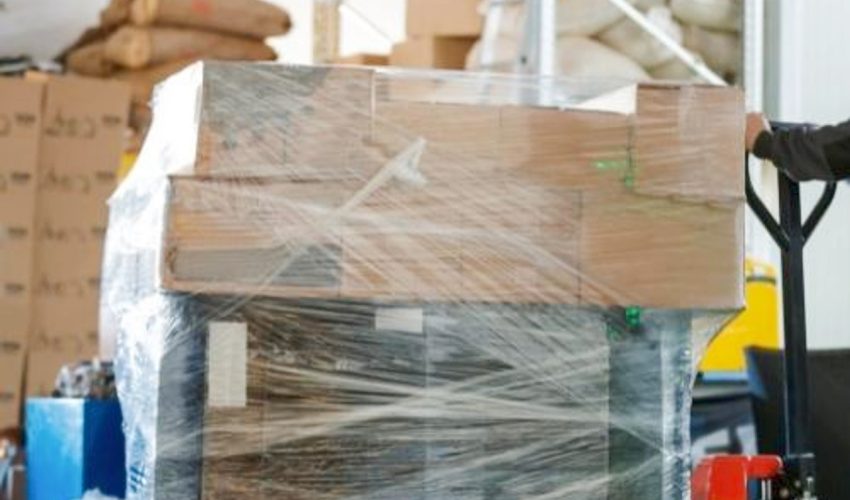
Load and pallet identification with custom pallet wrap design personalizes your plastic pallet wrap and film for a cleaner look. Pallet wrap design plays a crucial role in both retail and logistics, ensuring products are securely packaged while enhancing brand visibility. In today’s competitive market, pallet wrap serves not only as a protective layer but also as a marketing tool, providing opportunities to showcase logos, product details, and promotional messages. Some businesses handling temperature-sensitive goods integrate insulated pallet wrap into their custom designs, ensuring both brand consistency and product protection. This approach helps maintain stable temperatures while reinforcing a professional and recognizable appearance throughout the supply chain. Beyond functionality, these wraps improve the visual appeal of pallets, making them stand out to consumers and staff alike. As businesses prioritize aesthetics and practicality, the demand for innovative and visually striking pallet wrap designs continues to grow, elevating the role of packaging in the supply chain.
Why Choose Our Stretch Film Over Competitors?
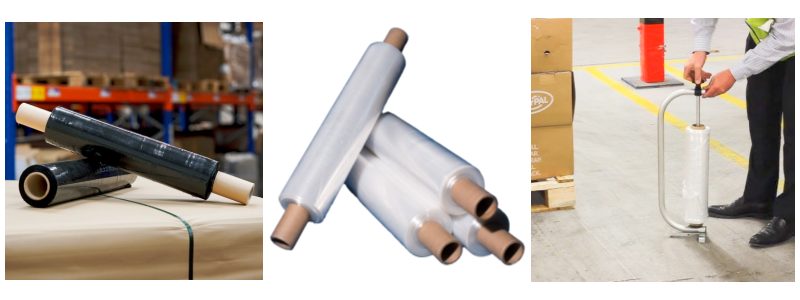
| Attribute | Description |
|---|---|
| Product Name | Pallet Wrap Stretch Film |
| Brand Name | PWP Stretch Film |
| Place of Origin | Fujian, China |
| Material | LLDPE (Linear Low-Density Polyethylene) |
| Type | Stretch Film |
| Length Options | Custom, 50m - 1500m |
| Thickness Options | 10micron - 80micron |
| Hardness | Soft (Flexible and easy to apply) |
| Feature | Moisture Proof, Durable, High Adhesion, Low Noise, Low Noise, Good Self-Adhesive, Moisture-Proof, Ideal for Sensitive Products |
| Application | Hand Roll, Machine Roll |
| Use | Packaging Products, Pallet Wrapping, Packaging of Loose and Small Products Together |
| Processing Type | Casting |
| Multiple Extrusion | 1-5 Layers |
| Packaging Type | Carton |
| Color Options | Clear, Colored, Custom Colors |
| Product Certification | SGS, ISO, ROHS |
| Delivery Time | 10-20 Days |
| MOQ (Minimum Order Quantity) | Custom based on order specifications, typical MOQ is around 1000kg |
| Price | Pricing based on custom needs |
| Compliance | Compliant with International Standards (SGS, ISO, ROHS) |
Pallet wrap design plays a vital part in creating impactful retail environments, where the appearance and organization of products directly influence purchasing decisions. Within this context, pallet skirts and pallet displays are essential components for maximizing product visibility and ensuring an attractive presentation on the retail floor.
A pallet skirt is a decorative covering that wraps the base of a pallet, hiding the raw pallet structure beneath and enhancing the overall display. This type of wrap offers retailers a way to maintain a clean and organized look, helping products appear more appealing to consumers. In addition to aesthetics, pallet skirts serve a branding purpose by incorporating custom designs, such as brand logos, product imagery, and promotional messages. They also play a role in pallet protection, ensuring that the pallet’s structure remains intact during transport and storage, preventing potential damage from rough handling.
Major retailers use pallet skirt displays to align with branding requirements and create a cohesive in-store appearance. These skirts strike a careful balance between functionality and branding—while they must accommodate the logistical needs of pallets, they also need to complement the product presentation. Retailers benefit from pallet skirts by not only protecting the goods but also enhancing their marketing impact.
While pallet wrap design focuses on securing goods during storage and transit, pallet displays and skirts add a decorative and promotional layer. Standard pallet wrap, typically used to stabilize loads, provides limited visual appeal and serves a utilitarian purpose. In contrast, pallet skirts are a more sophisticated option designed for product presentation in retail settings, offering ample space for creative design elements.
Pallet displays elevate the retail experience by transforming simple pallets into branded, eye-catching showcases that attract customer attention. Whether used for seasonal promotions or new product launches, these displays significantly enhance product visibility on the sales floor. As a result, businesses leverage pallet skirts and pallet wrap design to align with both branding goals and practical needs, creating a seamless blend of stability, security, and visual appeal.
Pallet wrap design, commonly referred to as stretch wrap or stretch film packaging, provides several advantages across various industries. Here’s a detailed exploration of its benefits:
Pallet wrap design offers a comprehensive solution for protecting, stabilizing, and efficiently transporting goods. Its cost-effectiveness, versatility, and ease of use make it an essential tool in modern logistics and supply chains, while its environmental benefits align with growing sustainability goals.
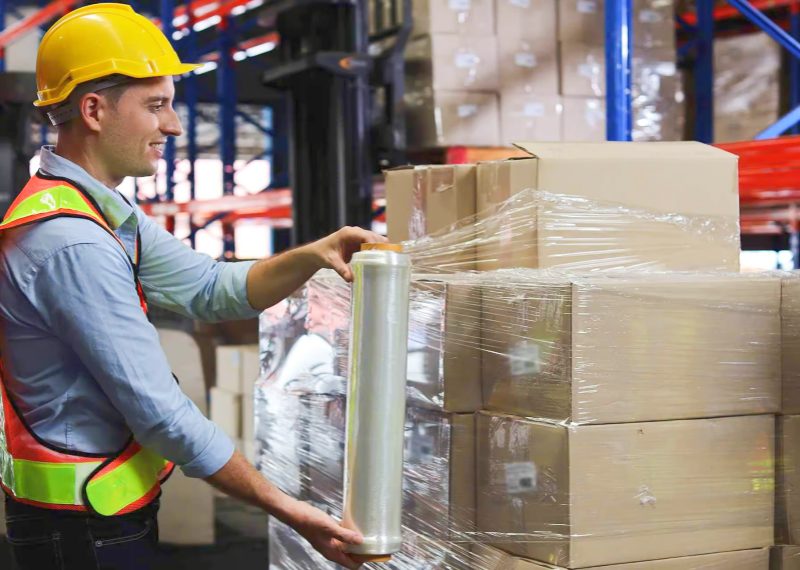
Reusable pallet wrap is a sustainable alternative to traditional single-use stretch film. Designed to offer the same functionality while being eco-friendly and cost-effective over time, reusable pallet wraps are gaining popularity in logistics and supply chains. Here’s an in-depth look at its design and advantages:
Reusable pallet wrap design is an innovative and sustainable solution for modern supply chains. By combining durability, cost-effectiveness, and environmental responsibility, it offers a compelling alternative to traditional stretch film. With increasing global emphasis on sustainability, adopting reusable wraps can significantly benefit businesses while supporting eco-friendly practices.
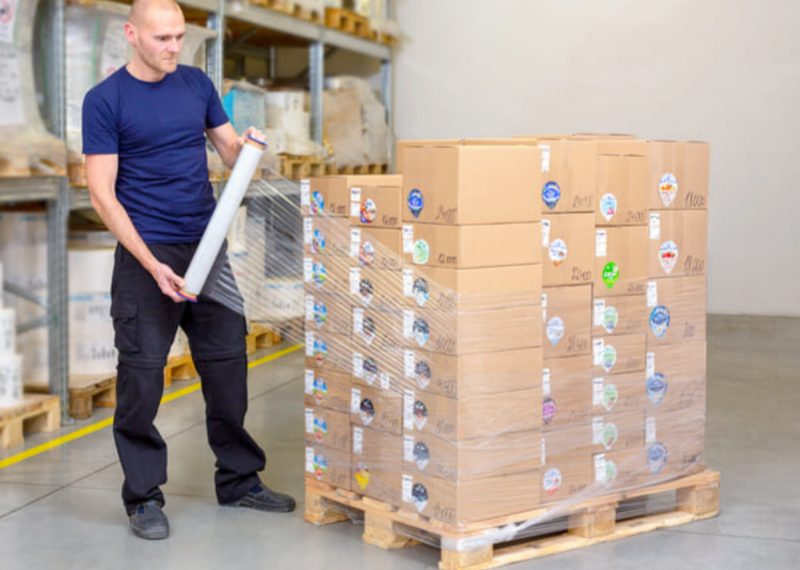
Logo pallet wrap design is an innovative way to combine functional packaging with strategic branding. It allows businesses to turn their logistics and transportation processes into powerful marketing tools while maintaining product safety and stability.
Logo pallet wrap involves printing a company’s logo, name, or marketing message directly onto the pallet wrap material. This customized packaging can be used for single-use stretch wraps or reusable pallet wraps, depending on the business’s needs.
Logo pallet wrap design offers a strategic blend of functionality and marketing, turning everyday packaging into a branding powerhouse. By using customized wraps, businesses can enhance their professional image, ensure product security, and make a lasting impression across supply chains—all while streamlining costs and promoting their brand.
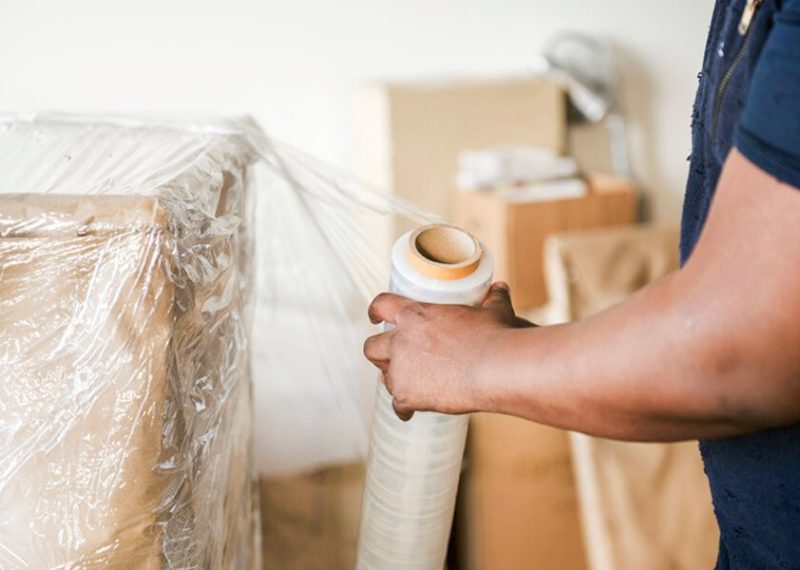
Incorporating pallet wrap design into packaging strategies provides businesses with the dual benefit of functionality and branding. Printed pallet wrap plays a critical role across various industries by stabilizing loads during storage and transport while also enhancing product visibility and brand recognition. This combination of protective wrapping and marketing appeal ensures companies can optimize both the security and aesthetic presentation of their goods.
Custom printed pallet wraps offer numerous benefits beyond basic load containment. These wraps help businesses improve the appearance of palletized loads, creating a more polished, professional presentation. Additionally, they act as a deterrent against pilferage and tampering, providing an extra layer of protection for high-value products. Load stability pallet wrap plays a key role in this by ensuring that pallets are securely wrapped and stable during transportation and storage. Industries such as semiconductor manufacturing, food distribution, retail logistics, and construction sectors particularly benefit from these wraps because they handle sensitive, valuable, or perishable goods, ensuring that the products remain intact and properly secured throughout the supply chain.
Beyond functionality, custom printed pallet wraps provide a unique marketing opportunity by showcasing a company’s brand identity. Logos, promotional messages, and handling instructions printed directly onto the pallet film transform simple pallets into mobile advertisements, promoting awareness whether in warehouses or during transit. These wraps ensure that each load represents the company’s branding, reinforcing messaging with every shipment. A common example is food distribution centers, where wraps prominently feature product names and handling messages such as “Fragile” or “Do Not Double Stack” to prevent damage during transportation.
Base wraps, another element within pallet wrap design, focus on maintaining the security of the load while contributing to the visual presentation of the product. These wraps are available in both hand-applied and machine-grade formats, ensuring flexibility across different operational environments. For heavy-duty applications where extra strength is required, reinforced stretch film can be used to provide additional durability and support. Whether wrapping small-scale pallets by hand or stabilizing large shipments with automated systems, these films guarantee load security throughout the supply chain, offering enhanced protection for products that require extra stability during transit and storage.
Base wraps can also be customized to meet specific branding or operational requirements. Businesses often choose from white, transparent, or colored film backgrounds to match their brand aesthetics. Transparent films provide subtle branding, allowing the product to remain visible, while opaque or color stretch films are ideal for bold promotional messaging. Additionally, when selecting the right wrap, it’s important to consider pallet stretch wrap specifications such as thickness, stretchability, and load capacity to ensure optimal performance. By combining security, design, and the right specifications, base pallet wraps ensure that products arrive at their destination intact, visually appealing, and ready to make an immediate impact on retail shelves.
With the growing importance of pallet wrap design, businesses are increasingly recognizing the value of investing in printed and base wraps that not only stabilize products but also elevate brand perception. These versatile wraps blend security with creativity, making them an essential tool in both logistics and retail marketing.
In a crowded retail environment, businesses are turning to pallet wrap design strategies that not only secure products but also capture consumer attention. Fancy pallet wrapping design combines vibrant visuals, thoughtful branding, and practical functionality, transforming simple pallets into eye-catching displays. These wraps elevate the presentation of products, creating memorable brand moments that can directly influence purchasing decisions. Beyond securing goods, fancy pallet wrap ensures that each product display is an extension of the brand, driving engagement and improving overall retail performance.
Fancy pallet wrapping design incorporates advanced printing technologies and creative branding techniques to enhance product displays. High-resolution digital printing ensures that graphics appear crisp and vibrant, even when viewed from a distance. This quality is essential for communicating the product’s value and catching a customer’s eye. Multi-colored designs and bold branding elements can reflect the company’s identity or promote specific campaigns, turning a pallet into a marketing asset.
In addition to logos and standard branding, headers, product images, and seasonal themes can be added to the pallet wrap for further customization. Seasonal touches, such as holiday colors or limited-time offers, give retailers a way to stay relevant and encourage impulse purchases. Headers provide extra space for messaging, offering the opportunity to highlight product benefits or call out promotions. These design elements come together to ensure that the product stands out amidst competition on the retail floor.
Creative pallet wrap design has proven effective across a variety of retail environments. Garden centers often utilize printed pallet wraps to reflect seasonal themes, such as floral prints in spring or festive designs during the winter holidays. These wraps help communicate the seasonal nature of the products and create a lively, engaging shopping experience for customers. The wrap becomes a visual cue that signals freshness and relevance, directly contributing to increased sales during key periods.
Large retailers also leverage pallet skirts as part of their display strategy, ensuring that products comply with vendor and retail guidelines while still looking attractive. Uses of pallet skirts aligns products with their branding policies and maintains consistency across stores, contributing to an organized shopping environment. These wraps blend functionality and marketing, ensuring that pallets meet operational standards without sacrificing visual appeal. Through such creative implementations, pallet wrap design is elevated beyond mere packaging, becoming a critical tool for brand storytelling and retail success.
With fancy pallet wrapping design, businesses unlock new opportunities to engage customers, enhance brand perception, and drive product visibility. The right design ensures that every pallet, from logistics to the sales floor, communicates value and leaves a lasting impression.
Businesses increasingly recognize the importance of versatile pallet wrap design to meet the diverse demands of retail, logistics, and e-commerce environments. These wraps not only secure products but also enhance their presentation and align with specific vendor and regulatory requirements. From compliance with retail guidelines to creating shelf-ready packaging, pallet wrap design plays a crucial role in helping businesses navigate the complexities of modern distribution while maintaining visual appeal and sustainability.
Adhering to vendor compliance is essential for retailers to ensure product displays align with store policies and brand standards. Custom pallet skirts play a pivotal role in meeting these requirements by balancing functionality with attractive visual elements. Retailers often mandate that displays conform to specific branding or operational guidelines, such as dimensions, design themes, or material types. Failure to meet these standards can result in penalties or rejected shipments, making compliance a critical factor for businesses using pallet skirts.
When designing for compliance, businesses must also consider whether they want an exposed or covered pallet option. Exposed pallet designs showcase the pallet structure, which may suit more industrial settings, while covered pallets with rollovers offer a cleaner, polished appearance ideal for retail displays. Rollovers—where the wrap extends over the pallet edge—add an extra layer of protection while maintaining a sleek design. These design choices allow companies to tailor their pallet skirts to different retail environments, ensuring alignment with vendor expectations while maximizing brand impact.
| Aspect | Physical Stores (Brick-and-Mortar) | E-commerce Sector | Sustainability Initiatives |
|---|---|---|---|
| Packaging Focus | Shelf-ready packaging to streamline restocking | Secure product delivery and brand promotion during shipment | Eco-friendly materials to meet sustainability goals |
| Design Goal | Professional presentation and secure products on shelves | Reinforce brand identity through pallet wrap design | Reduce waste and environmental impact through sustainable solutions |
| Labor Efficiency | Minimize unpacking and restocking time | Ensure intact product delivery with minimal repacking | Use reusable wraps or biodegradable films to save resources |
| Branding Opportunity | N/A | Branding elements on wraps promote company identity in transit | Enhances reputation as a sustainable brand |
| Key Innovations | Shelf-ready packaging | Branded pallet wraps | Reusable and biodegradable wrap materials |
| Impact on Operations | Increased efficiency and reduced labor costs | Protect products during shipment while enhancing brand visibility | Align with environmental initiatives and meet consumer expectations |
| Versatility | Adaptable for easy restocking in stores | Suitable for multiple shipping environments | Balances functionality with sustainability |
| Competitive Advantage | Efficient shelf management and professional presentation | Enhanced brand recognition throughout logistics | Supports corporate environmental responsibility |
Through careful design choices, businesses can tailor their pallet wrap strategies to fit multiple applications, ensuring compliance, efficiency, and sustainability. The versatility of pallet wrap design makes it an essential tool in modern retail and logistics, helping companies stay competitive in an evolving marketplace.
Selecting the most suitable pallet wrap design is essential for businesses looking to balance practicality with brand promotion. A thoughtful design ensures that pallets not only secure products effectively but also convey a strong visual message aligned with the company’s identity. Whether used for logistics, retail, or promotional campaigns, the right pallet wrap design can make a significant difference in operational efficiency, brand recognition, and cost-effectiveness. Businesses should evaluate several critical factors to ensure their wrap design meets both practical needs and market expectations.
| Aspect | Details |
|---|---|
| Materials | Businesses select materials based on specific applications. |
| Corrugated Board | Known for its lightweight strength. |
| Fluted Designs | Provide rigidity and impact resistance. |
| Engineered Films | Offer flexibility and durability. |
| Purpose of Pallet | - Retail displays |
| - Transportation logistics | |
| Importance of Material Choice | Different materials serve varying needs; businesses need to understand the pallet’s purpose to select the most appropriate material. |
| Order Processes | Custom pallet wrap projects require careful planning with manufacturers. |
| Custom Design Coordination | - Develop artwork proofs |
| - Approve layouts | |
| - Schedule production | |
| Lead Time Management | Planning for lead times ensures wraps are ready for key events, promotions, or seasonal launches without delays. |
| Flexibility in Design | Awareness of manufacturing timelines allows businesses to refine the design if needed during development. |
| Key Features to Look For | Description | Benefit |
|---|---|---|
| No Minimum Order Options | Flexibility in order size, ideal for small businesses or one-time campaigns. | Allows testing of designs without large commitments, supporting new branding strategies and limited-time offers. |
| Quantity-Based Pricing | Discounts provided as order volume increases. | Encourages bulk purchasing for larger businesses with ongoing needs, lowering cost per unit. |
| Material Evaluation | Selection of materials based on product protection and visual appeal. | Ensures product security while maintaining branding quality. |
| Production Timelines | Assessment of lead times and delivery schedules. | Helps align with operational timelines, preventing delays and ensuring product availability. |
| Brand Identity Alignment | Customized designs to reflect brand image. | Enhances brand visibility in retail and logistics environments, setting the business apart from competitors. |
By carefully evaluating materials, production timelines, and order options, companies can choose the right pallet wrap design that aligns with their brand identity, operational needs, and budget. A well-planned design ensures not only product security but also enhances brand visibility, setting the business apart from competitors in both retail and logistics environments.
To wrap a pallet properly, start by securing the wrap to the base of the pallet. Use stretch wrap and circle the pallet several times at the bottom to anchor it. Gradually work your way upward, overlapping each layer by about 50%. Ensure the wrap covers the entire load and extends slightly over the top to keep items secure. Use enough tension to stabilize the load but not too tight to damage goods. For extra stability, use corner boards or straps as needed. A stable and evenly distributed load is crucial for safe pallet wrapping.
The standard size for pallet wrap typically ranges between 12 to 20 inches in width, depending on the application. Commonly used rolls are 15 to 18 inches wide for hand wrapping and 20 to 30 inches wide for machine wrapping. The thickness of the wrap, measured in microns or gauge, is usually between 60 to 120 microns. The roll length varies but typically ranges from 1,000 to 1,500 feet for hand wrap and up to 5,000 feet for machine wrap. Always choose the wrap size and thickness based on the weight and type of load.
Alternatives to pallet wrapping include:
Pallet straps or bands: Made of plastic or metal, they secure loads without plastic waste.
Reusable pallet covers: Durable and eco-friendly, used for consistent load sizes.
Shrink hoods: Heat-shrinkable plastic covers offering weather resistance.
Stretch netting: Allows ventilation for items like fresh produce.
Corrugated cardboard sheeting: Provides stability and protection.
Glue or tacky adhesives: Keeps boxes in place without additional wrapping.
These alternatives can be more sustainable and suitable for specific load requirements.
Cling wrap, also known as plastic wrap, is a thin film primarily used for food packaging. It is stretchy, sticks to surfaces due to static properties, and provides a tight seal for freshness. Pallet wrap, or stretch wrap, is thicker and more durable, designed for industrial use. It secures heavy loads on pallets and prevents shifting during transport. Unlike cling wrap, pallet wrap is applied with significant tension for load stability. Additionally, pallet wrap often comes in larger rolls and is available in different grades for machine or manual application.

My name is James Thompson, and I’m the editor of this website dedicated to Stretch Film, Pallet Wrap, and Stretch Wrap products.
My passion for packaging began when I noticed the challenges companies face in securing their products efficiently for transportation and storage. This inspired me to delve deep into the world of stretch films and pallet wraps, exploring the latest technologies and best practices.
I aim to provide valuable insights, practical tips, and up-to-date industry trends to assist you in making informed decisions. Whether you’re a small business owner or part of a large corporation, my goal is to support you in optimizing your operations and ensuring your products reach their destination safely.
Thank you for visiting, and I look forward to accompanying you on your journey toward better packaging solutions.
Comments are closed